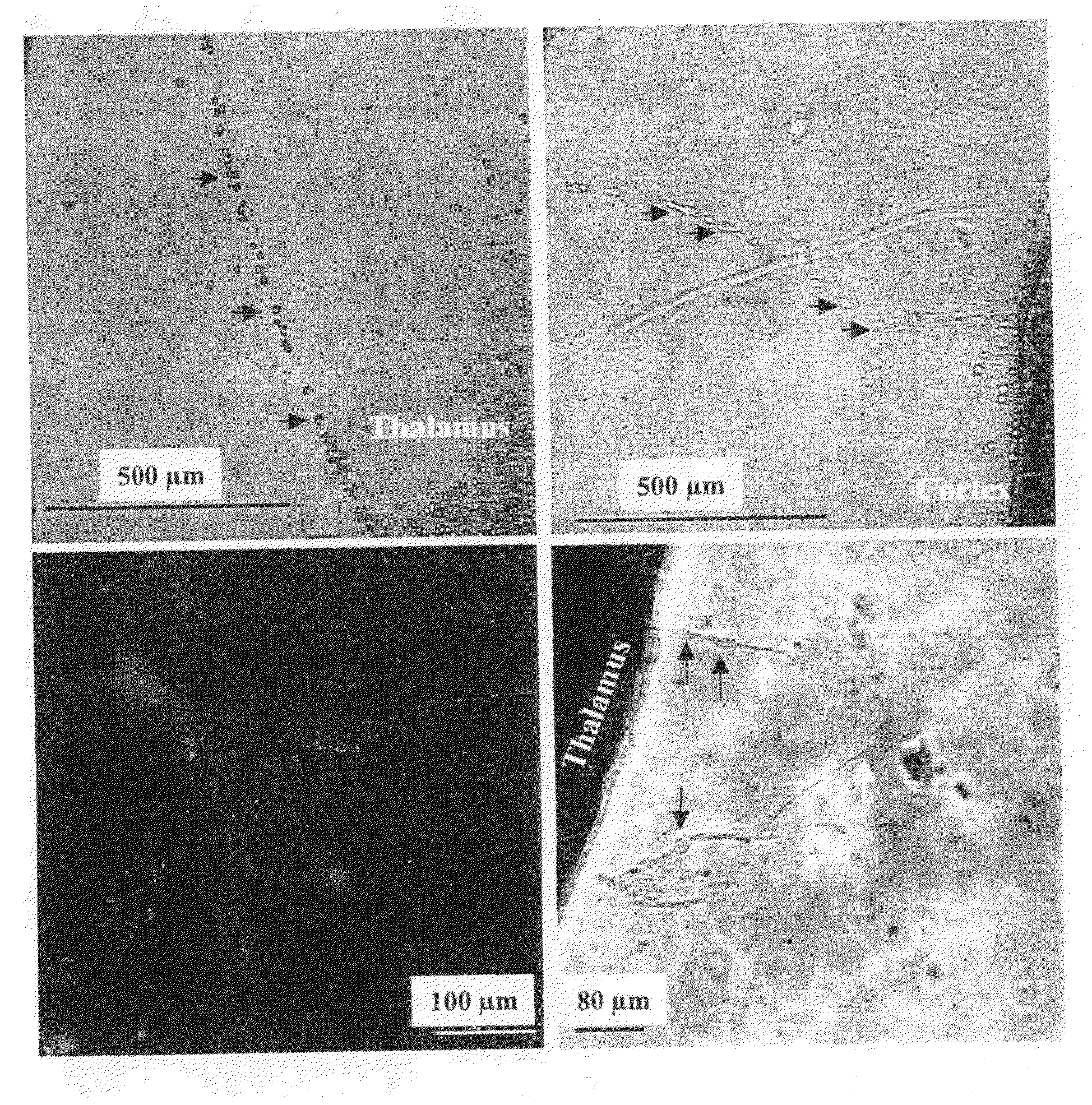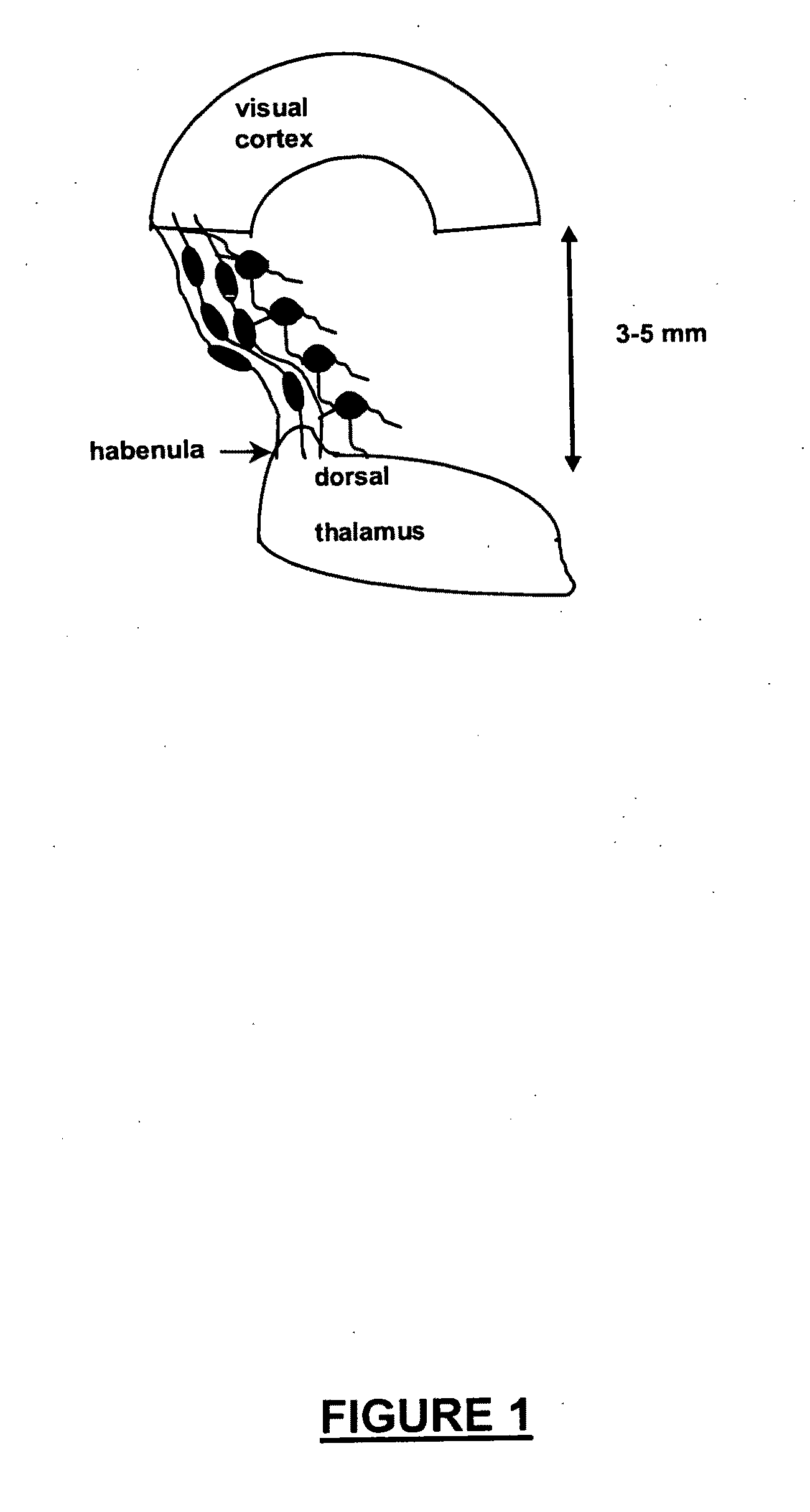Neural regeneration peptides and methods for their use in treatment of brain damage
a neuronal regeneration and neuropeptide technology, applied in the direction of peptide sources, bacteria, fungi, etc., can solve the problems of significant neuronal cell loss and loss of brain function, no treatment available to restore neuronal function, and no treatment currently available to prevent cell death in the brain, etc., to achieve high identity, increase neuronal proliferation and migration, and induce migration, proliferation and/or neurite outgrowth
- Summary
- Abstract
- Description
- Claims
- Application Information
AI Technical Summary
Benefits of technology
Problems solved by technology
Method used
Image
Examples
example 1
Identification of Human and Mouse NRPs
[0142]Using bioinformatic tools, we identified NRPs within the human and mouse genome. These new NRP genes were annotated using the following methods.
[0143]We performed a BLASTP search using the 16 amino acid rat NRP-1 as a template. We found a sequence having 100% identity to the rat NRP-1 sequence: a human cachexia-related protein. The cDNA of the human cachexia-related protein is encoded by 5 exons located on human chromosome 12. Because of the identity of the rat NRP-1 and a portion of the human cachexia protein, a new annotation of NRP orthologs was orientated alongside these 5 exons. tBlastN searches within the human NCBI-database revealed a previously unknown open reading frame (ORF) of 321 nucleic acids on chromosome 13. This sequence encodes a peptide having striking homology to the cachexia-related protein fragment having amino acids 1-30 (cachexia protein without signal sequence). These methods were also used to identify other human N...
example 2
In Vitro Assay for Evaluating Migration-Inducing Activity I
[0147]We developed a new assay system for identifying NRP having migration-inducing activity. The assay system was used following guidelines approved by the Gesundheitsamt Magdeburg animal ethics committee. Newborn Long Evans rats (P0) were killed by decapitation, and neural tissues were used for preparation of organotypic cultures (OTCs). Neocortical tissue (areas 17-18 according to the Paxinos rat atlas of the developing rat brain) and thalamic tissue from the dorsal thalamus (visual areas) were extracted. These areas represent the visual axis. The dorsal thalamus was accessed by an intersection cut to remove the hypothalamus. Subsequently, the thalamus was sliced frontally using a McIllwain tissue chopper into 350 μm thick slices. Using a dissecting microscope, the habenula nucleus served as a landmark to select only dorsal thalamic areas. Cortical tissues were cut using two sagittal and two frontal intersections in order...
example 3
Migrating Cells are of Neuronal Origin and Adopt a Differentiated Phenotype
[0155]To determine the cellular nature of cell bridges, we used neural-specific immunohistochemistry. Immunohistochemistry was carried out according to methods of (Obst and Wahle, 1995). OTCs as described above were rinsed twice in 0.1 M phosphate buffer for 3 h. After a study was carried out, tissues were fixed using conventional fixatives suitable for immunohistochemistry. To improve antibody penetration into the tissues and cells, OTCs were incubated for 10 min in a freezing solution consisting of 25% sucrose; 10% glycerol; 100 mM NaCl in 0.01 M phosphate buffer (pH 7.4) at −80° C. (Gúlyas et al., 1996). OTCs were then incubated for 5 min in 1% H2O2 followed by a treatment of 0.4% Triton 100 and 10% normal goat serum (blocking solution) for 3 h (Sigma chemicals). Primary antibodies (anti-parvalbumin IgG; anti-calretinin IgG; anti-MAP-2 IgG) were incubated with 0.4% Triton; 2% BSA; 2% normal goat serum in P...
PUM
| Property | Measurement | Unit |
|---|---|---|
| time | aaaaa | aaaaa |
| diameter | aaaaa | aaaaa |
| concentrations | aaaaa | aaaaa |
Abstract
Description
Claims
Application Information
 Login to View More
Login to View More - R&D
- Intellectual Property
- Life Sciences
- Materials
- Tech Scout
- Unparalleled Data Quality
- Higher Quality Content
- 60% Fewer Hallucinations
Browse by: Latest US Patents, China's latest patents, Technical Efficacy Thesaurus, Application Domain, Technology Topic, Popular Technical Reports.
© 2025 PatSnap. All rights reserved.Legal|Privacy policy|Modern Slavery Act Transparency Statement|Sitemap|About US| Contact US: help@patsnap.com



